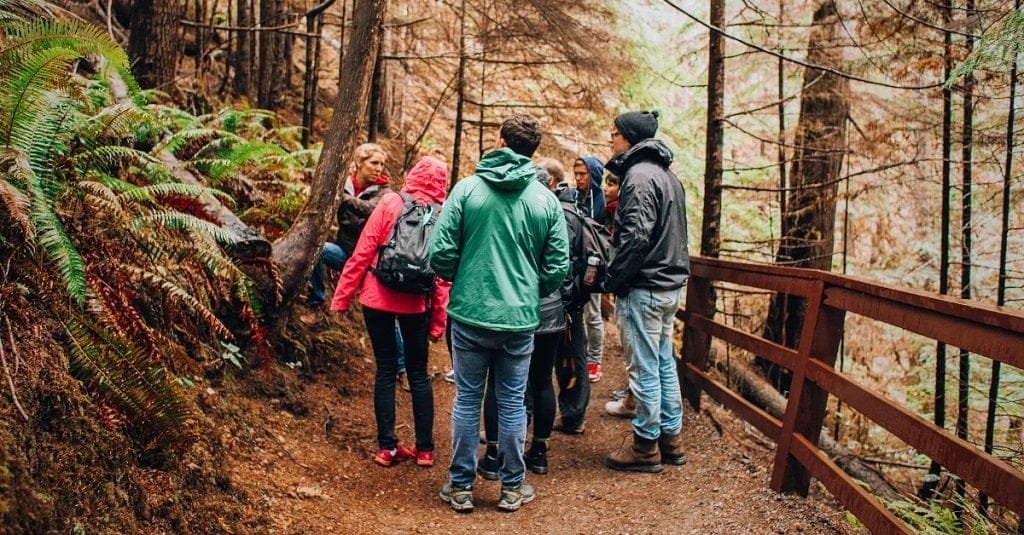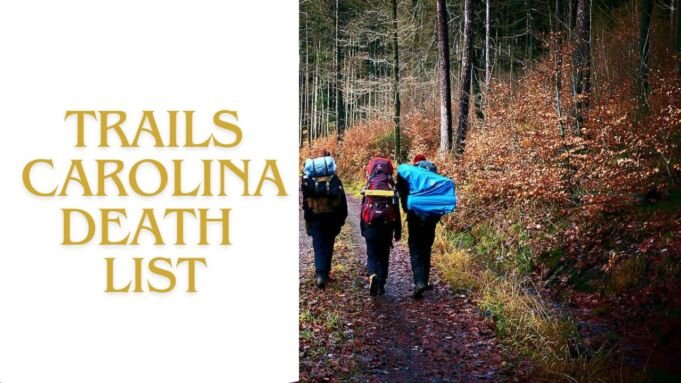The Trails Carolina Death List has emerged as a crucial topic of debate within the field of wilderness therapy. This article seeks to delve deeply into the subject, scrutinizing the incidents enumerated on the list. It aims to provide a comprehensive analysis of each case, shedding light on their specifics and considering the wider consequences for the wilderness therapy sector.
Trails Carolina’s primary mission is to help troubled teens through outdoor adventures, educational programs, and therapeutic interventions. Yet, the program has faced significant challenges lately. There have been several tragic events, including the deaths of at least three teenagers participating in Trails Carolina since 2018. These incidents have raised serious concerns about the safety measures in place and whether the program is adequately monitoring its participants.
History of Trails Carolina
Trails Carolina is a distinguished wilderness therapy program designed for young people facing challenges. It aims to foster personal growth and emotional resilience through outdoor adventures and therapeutic practices. Despite facing scrutiny, it’s important to note there is no official death list linked to the program.
Founded on the principle that nature can be a powerful catalyst for healing and development, Trails Carolina encourages participants to disconnect from technological distractions. Through activities like hiking, camping, and experiential learning, the program addresses various issues, including behavioral problems and mental health challenges. Trails Carolina’s goal is to create a supportive environment where participants can uncover their potential, form meaningful relationships, and embark on a path of self-improvement.
What is The Trails Carolina Death List?
Previously, we discussed the history of the Trails Carolina death list, which documents several tragic fatalities at the Trails Carolina wilderness therapy camp, a facility aimed at rehabilitating troubled youth. Unfortunately, it has been the site where various individuals have lost their lives.
This situation underscores the necessity for the public to be informed about the nature of this camp. Moreover, these incidents highlight the critical need for stringent safety protocols and ethical standards within such therapy camps.
The Trails Carolina Wilderness Therapy Program
Wilderness therapy offers a distinctive approach to assisting troubled youth through nature immersion and therapeutic interventions. Trails Carolina, located amidst the serene landscapes of North Carolina, stands out for its wilderness therapy services.
The Distressing Events at Trails Carolina
A particularly dark chapter in the history of Trails Carolina involves the loss of young lives. To date, there have been four known deaths associated with the Trails Carolina Death List, marking a sorrowful period for the program. These include the cases of William Edward Lee, Ian August, Charles Moody, and Alec Lansing, each death bringing its own shadow to the program’s legacy.
In 2000, a tragic event saw 15-year-old William Edward Lee lose his life due to a brain injury incurred during a restraint. Following this, in 2002, 14-year-old Ian August succumbed to hyperthermia, and two years later, in 2004, 17-year-old Charles Moody died from asphyxiation under similar circumstances.
The most recent incident occurred in 2024 when a 12-year-old boy passed away just a day after joining the Trails Carolina Wilderness Therapy Program. This incident has sparked significant concerns about the program’s oversight and its ability to safely accommodate high-risk participants.
Trails Carolina Death List Wilderness Therapy Camp

At the heart of these controversies are the tragic deaths of several individuals, incidents that have ignited significant debate and concern. This blog delves into the unfortunate circumstances surrounding Alec Lansing, Katelyn Haruko, Sergey Blashchishen, and Caleb Jensen.
We aim to thoroughly examine these cases, striving to fully comprehend the situations that unfolded and led to these devastating outcomes. Such analysis will help us understand the implications for wilderness therapy as a field. Furthermore, this situation sheds light on the complexities of therapeutic interventions, adolescent mental health, and the critical importance of safety and oversight in such sensitive environments.
Read More: What to Wear Hiking in 40 Degree Weather?
Explore The Trails Carolina Death List
1. The Trails Carolina Crisis
The unfortunate events at Trails Carolina have shed light on a deep-seated issue within the wilderness therapy industry. The deaths associated with Trails Carolina serve as somber reminders of the fine line between providing therapeutic support in challenging settings and ensuring the safety and well-being of all involved. This discussion explores the impact of these tragedies on the debate over the effectiveness and moral implications of wilderness therapy as a treatment option.
2. The Case of Alec Lansing
The loss of Alec Lansing, a notable entry on the Trails Carolina Death List, raised serious questions about the adequacy of safety measures and oversight in wilderness therapy. This section looks into the lead-up to Alec’s tragic death, the reaction from Trails Carolina, and the legal and ethical discussions it sparked regarding the accountability of such programs to their participants.
3. The Heartbreak of Lost Hope
The narratives behind the Trails Carolina Death List tell the agonizing stories of families who sought healing and assistance, only to face despair. This part offers insight into the emotional and psychological toll these tragedies have taken on the families involved, examining the broken hopes and enduring impact of these losses.
4. Katelyn Haruko’s Story
Katelyn Haruko’s story, as documented in the Trails Carolina Incident Record, presents another harrowing tale. It delves into the details of her case, including her reasons for joining the program, the sequence of events leading to her demise, and the larger issues her situation raises regarding the adequacy of safety protocols and emergency responses in wilderness therapy.
5. Caleb Jensen’s Tragic Journey
Caleb Jensen’s story, detailed in the Trails Carolina Incident Record, reveals additional risks associated with wilderness therapy. This section considers Caleb’s background, his reasons for enrolling in the program, and the circumstances of his death. It also reflects on the implications for the future of wilderness therapy, emphasizing the need for stringent safety measures to avert similar tragedies.
6. Sergey Blashchishen’s Fatal Experience
The case of Sergey Blashchishen on the Trails Carolina Death List exemplifies the potential dangers of wilderness therapy. This part scrutinizes Sergey’s experience at Trails Carolina, the factors leading to his death, and the ensuing demands for reforms and enhanced supervision within wilderness therapy programs.
Related: What to Wear When Hiking in Summer [Stay Cool and Comfy]
Legal Claims Against Trails Carolina
In 2014, Trails Carolina faced a significant legal obstacle when a lawsuit filed by a former staff member brought serious accusations to the forefront. The lawsuit alleged that the program forced staff to partake in physical restraints of students and accused some staff members of exerting excessive force on those in their care. Additionally, it highlighted concerns over inadequate training and oversight for staff, posing risks to both employees and participants.
Despite these grave concerns, Trails Carolina has remained operational. State authorities have noted improvements in how the program supervises and trains its employees. Yet, the shadow of its troubled past continues to cast doubt on its capability to offer a safe and beneficial therapeutic setting.
Advantages and Dangers The Trails Carolina Wilderness Therapy Program
The serious allegations and devastating events linked to Trails Carolina highlight the critical need for a thorough examination of wilderness therapy programs. Ensuring the safety and well-being of participants must be the foremost priority, and any program failing to meet the necessary standards should face consequences beyond mere financial repercussions.
Parents considering wilderness therapy for their children should approach the decision with caution and diligence. It’s essential to seek out programs that are transparent about their policies, maintain open communication with families, and show a history of successful outcomes.
Trails Carolina Horror Stories Impact on Public

The unsettling accounts from Trails Carolina have significantly influenced how wilderness therapy programs are viewed by the public. The spread of these distressing narratives through social media has put the spotlight on survivor experiences, leading to a heightened call for stricter oversight, more openness, and greater accountability in the sector.
This situation has also led to a period of reflection among those involved in wilderness therapy, encouraging them to reevaluate their methods and strive for the highest ethical standards. There’s a growing acknowledgment among industry professionals of the need for sweeping changes, such as better training for staff, improved incident reporting mechanisms, and fostering an environment of transparent communication with families.
Must Read: Are Blundstones Good for Hiking? Insights from Experienced Hikers
Choosing a Safe Wilderness Therapy Program
Accreditation and Licensure
When exploring wilderness therapy options, ensuring the program is accredited and licensed is crucial, confirming adherence to stringent safety and quality standards.
Staff Expertise
The presence of qualified staff, including credentialed therapists and skilled wilderness guides, is essential for the safety and effectiveness of the program.
Medical Support
Access to healthcare and appropriate medication management is vital in choosing a wilderness therapy program.
Safety Measures
The program must have comprehensive plans for unexpected situations such as adverse weather, natural disasters, injuries, or getting lost. Adequate preparation for all conditions and activities is necessary to avoid putting participants at risk due to insufficient safety protocols.
Family Engagement
Active involvement of the family is key in enhancing the participant’s progress and addressing their needs throughout the program. Opt for a program that maintains open lines of communication with families, offering regular updates on the teen’s progress and experiences.
The provision of family therapy sessions is also indicative of a program’s dedication to the participant’s well-being and long-term success. A program’s lack of transparency and family involvement may raise questions about its commitment to the best interests of your teen.
Frequently Asked Questions (FAQs)
How many deaths have been reported at Trails Carolina?
While the exact number may vary based on the source, there have been several documented cases that have contributed to the creation of the so-called death list. It’s important to consult up-to-date and reliable sources for the most current information.
What causes have been attributed to these deaths?
The causes of death reported on the Trails Carolina Death List have varied, including accidents, health complications, and other factors related to the wilderness therapy setting. Each case has its own set of circumstances.
Has Trails Carolina responded to these incidents?
Yes, Trails Carolina has publicly addressed these incidents, emphasizing their commitment to participant safety and continuous improvement of their programs. They have also mentioned implementing additional safety measures and protocols in response.
What are the implications of the death list for wilderness therapy programs?
The death list has sparked a broader conversation about the safety, regulation, and effectiveness of wilderness therapy programs. It highlights the need for stringent safety protocols, qualified staff, and comprehensive oversight to ensure the well-being of participants.
Are wilderness therapy programs like Trails Carolina safe?
While many wilderness therapy programs have successfully helped individuals with various challenges, incidents like those on the Trails Carolina Death List underscore the importance of careful program selection, oversight, and ongoing evaluation to ensure safety and efficacy.
How can the industry improve safety in wilderness therapy programs?
Improving safety involves adopting best practices for risk management, enhancing staff training and qualifications, ensuring access to medical care, and fostering transparent communication with participants and their families. Industry-wide standards and regular audits may also contribute to higher safety levels.
Conclusion
The existence of the Trails Carolina death list has served as a critical alert for the wilderness therapy industry. The continuation and reputation of Trails Carolina and analogous initiatives depend significantly on their commitment to reform and place participant safety at the forefront.
These unfortunate incidents have initiated a pivotal dialogue on how to maintain a balance between providing effective therapeutic support and ensuring the safety of participants. As this sector evolves, it’s expected that the insights gained from these tragedies will contribute to enhancing the overall success and safety of wilderness therapy programs.
This final section contemplates the prospective advancements in wilderness therapy, stressing the necessity of assimilating lessons from past events to foster a more secure and beneficial therapeutic setting.
















[…] Read: Trails Carolina Death List […]
Comments are closed.